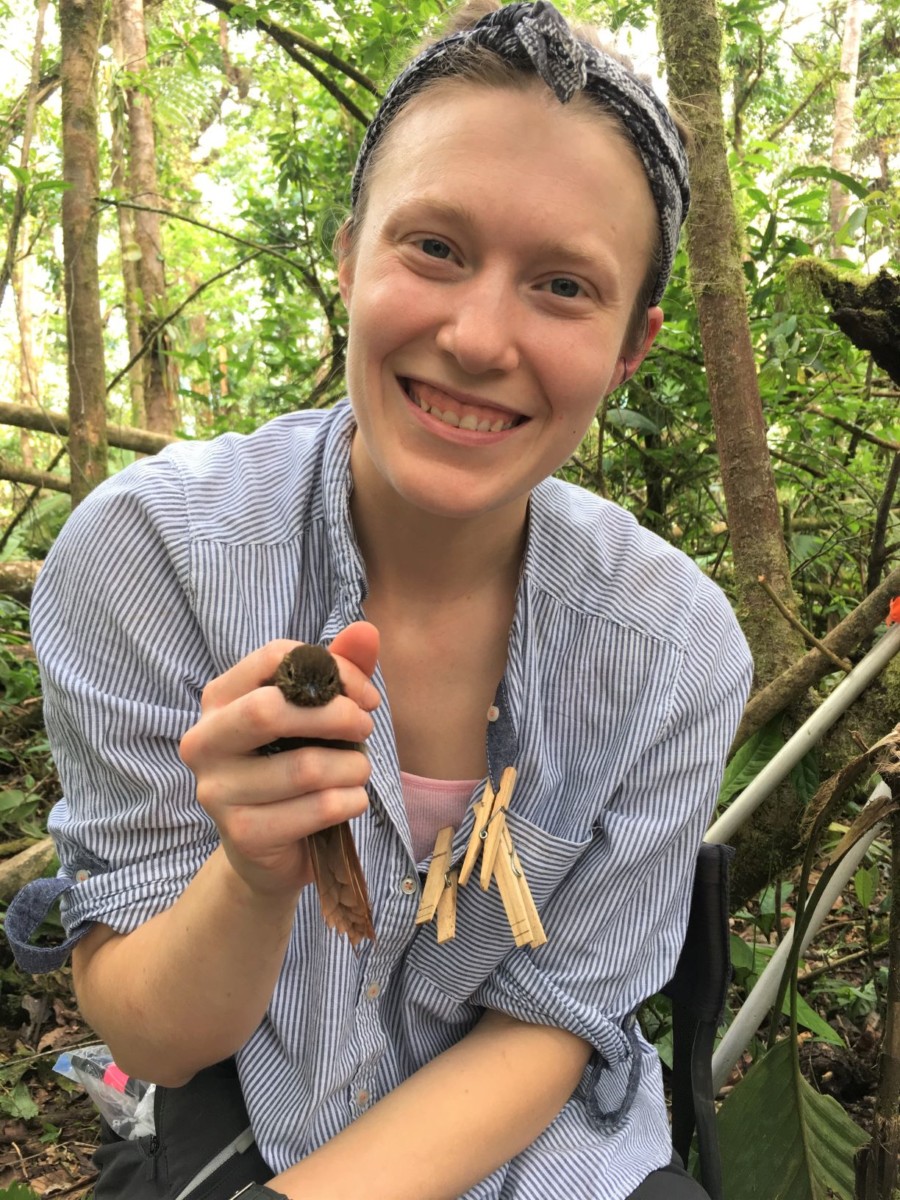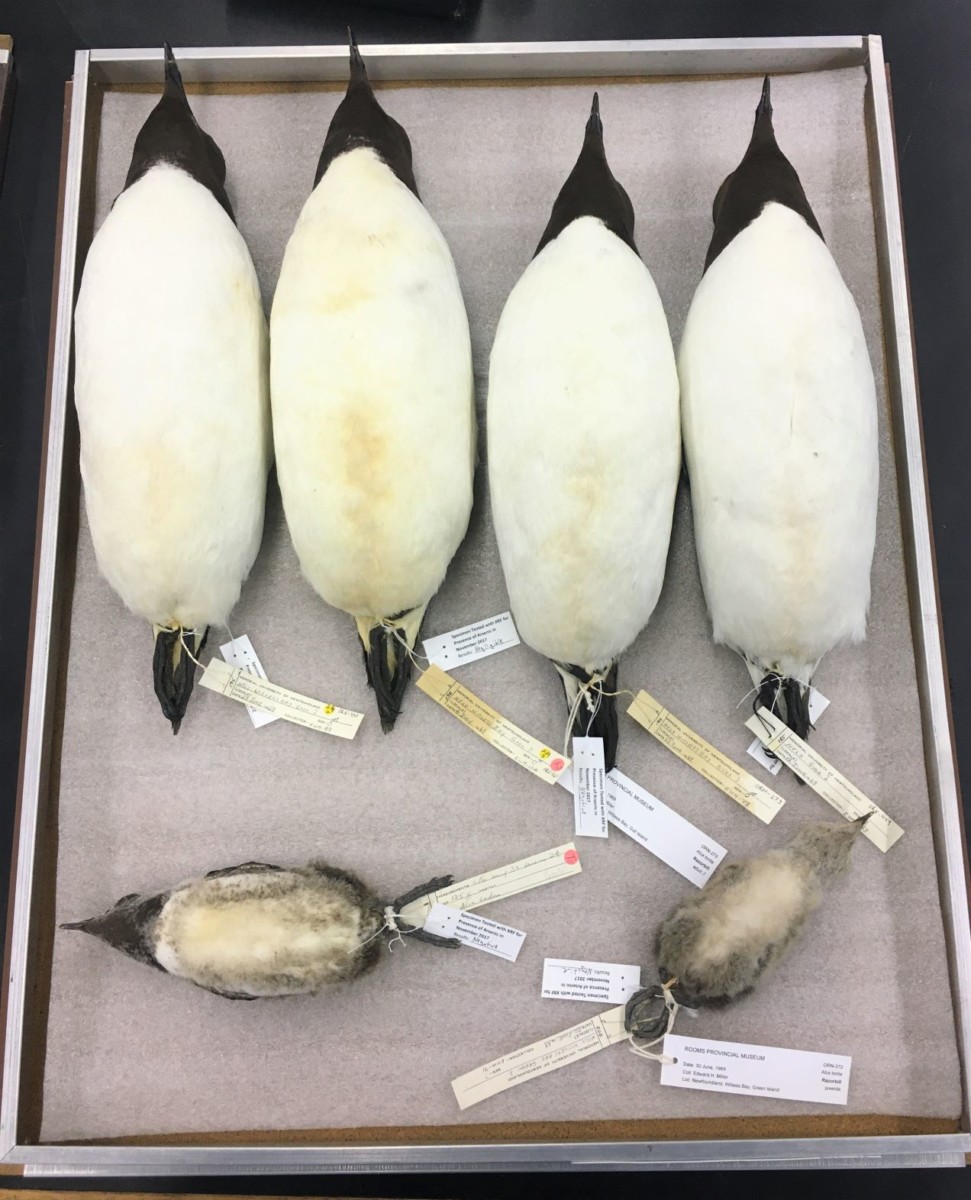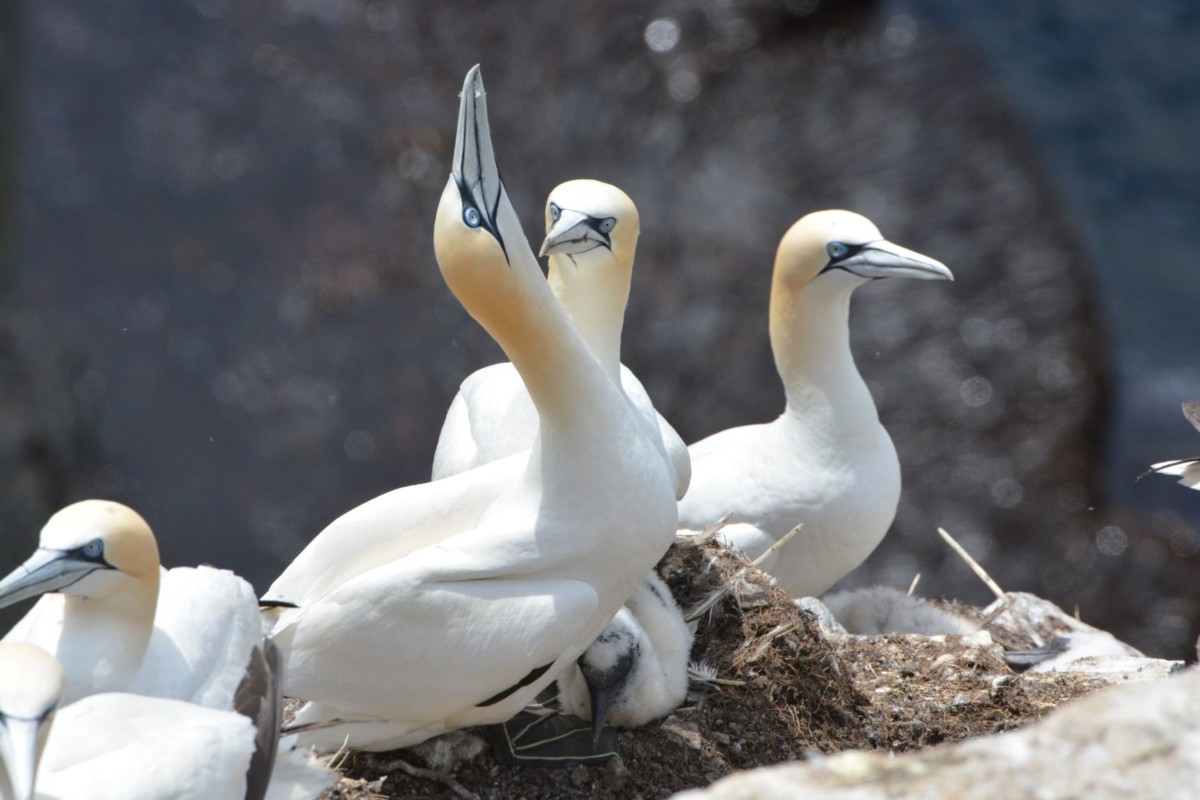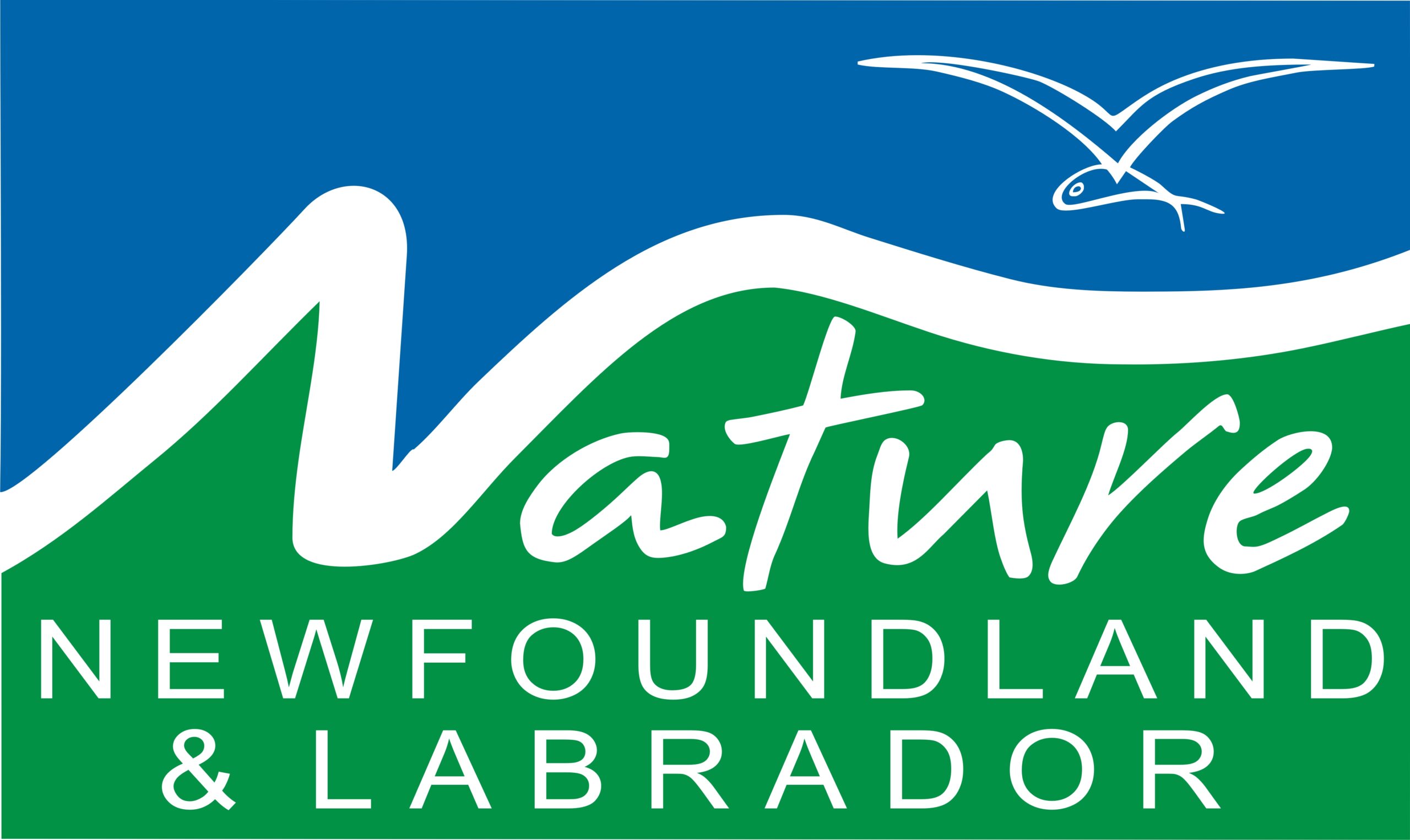The recipient of Memorial University’s Leslie Tuck Avian Ecology Award, an endowed scholarship started by friends of the Natural History Society (now Nature NL) has their winning essay published by Nature NL. This year’s winner, Molly M. Morrissey (MSc Candidate, Dept. Biology, Memorial University of Newfoundland) contributed the following essay, which discusses innovative efforts to understand seabird population and survival in Newfoundland and Labrador.
by Molly M. Morrissey
The world’s oceans have undergone significant, rapid changes since the onset of the industrial revolution. Human activities, directly and indirectly, are nearly universally recognized as a major contributor to these changes. One consequence has been massive food-web shifts, from which Newfoundland has not been spared. Overfishing, poor data collection, and weakly enforced quotas led to the near loss of the Atlantic cod, a fish synonymous with Newfoundland. The Newfoundland cod population collapsed in the early 1990s and is not even at half of its historical numbers despite a nearly 30-year moratorium on commercial fishing. Natural climate changes can cause dramatic food web shifts as well. Newfoundland experienced the coldest oceanic waters in almost a century in 1991. Capelin, a crucially important forage fish, suffered a population collapse in response to this cold-water event. With human mediated climate change causing more chaotic weather patterns, we will surely be seeing more frequent extreme weather events, with consequences to the food chain.

Assessing changes in an environment as vast as the ocean proves challenging and requires some creative solutions. Enter the seabird: part marine, part terrestrial, a fabulous indicator of a world virtually inaccessible to humans. Seabirds are uniquely adapted to a life at sea, coming to land only during the summer breeding seasons, often in very large numbers. Birds breed, raise young, and die at their colonies, leaving behind bones, feathers, eggs, and whole carcasses. The foods that the birds consume have unique nutrient signatures that are recorded in their bones and feathers. If we have the right tools, we can decipher these signatures to recreate a bird’s menu. And a bird’s menu may contain clues for deciphering the health of their ocean food sources and habitat, and how it has changed in recent decades.
For my thesis project, I will be using chemical markers in seabird feathers to reconstruct historic diets of several important Newfoundland seabirds, including Atlantic puffin, Razorbill, Common murre, and Leach’s storm petrel, and comparing them to modern diets. Feathers will be gathered at different sites around Newfoundland where birds currently breed, and historical feathers will be obtained from several of Canada’s natural history museums, including The Rooms in St. John’s. Collections of animal specimens at museums are vital to scientific exploration because although bones can be well-preserved in some environments, feathers decompose at considerably faster rates. Preserved bird specimens in museums are not only a great educational tool for the public, but they are also a repository of historical data. The feathers I will be studying were collected from the late 1800s through present day. We will compare the recreated estimates of past bird diets to modern day diets, and mapping changes in fish and algal communities in both time and location. Looking at seabird diets can help map out trends and provide insight into future population outcomes.

I will also be studying how these seabirds affect the environment at their summer colonies. Globally, seabirds have a huge influence on the soil, air, and water at and near their colonies. The nutrients in their droppings can change the chemical and microbial makeup of soil or freshwater ponds. Some plant and plankton communities at seabird colonies depend on the birds returning every summer to provide critical nutrients, and dwindling numbers of seabirds or a total absence could spell disaster for these dependent species. There is a burgeoning body of research on seabird influences on colony ecology in Newfoundland and Labrador, and I am excited to explore seabirds’ relationships with the land and terrestrial inhabitants further. I hope my work will help expand our understanding of how birds are affected by, and adapt to, a changing world.
With global temperatures rising, seabird watching opportunities are becoming increasingly rare. According to a 2018 BirdLife International study, Atlantic puffins, one of the most beloved and recognizable birds of the arctic, are heading towards extinction. A loss of a species is devastating in and of itself, but the loss represents so much more than just one species. As we have seen with the extreme reduction in cod and capelin numbers, every species plays a vital role in an ecosystem; when one species is extinguished, the whole community suffers. Modern biodiversity loss is ubiquitous, occurring in every type of habitat worldwide. The 2019 Audubon Society report “Survival by Degrees: 389 Species on the Brink” projects that of all groups of birds, Arctic birds and waterbirds will be particularly vulnerable to habitat loss and declining numbers as a consequence of warming temperatures.
The remoteness of breeding colonies means that many seabirds are seen infrequently by humans. Cape St. Mary’s Ecological Preserve on the Avalon Peninsula is an exception, as it may be the most accessible seabird colony for birdwatching in the world. It is a rare privilege to be able to see (and smell!) seabirds at such a close distance, to hear their raucous calls and watch them care for their young.

My hope is that my work will contribute to improving conservation strategies for seabirds and their ocean habitats in Newfoundland and Labrador. No one species can be protected without understanding the intricate ways in which it interacts with others, and I am fortunate to be able to explore the ways seabirds are influenced by—and influence—their environment. Millions of seabirds have chosen Newfoundland as a breeding destination year after year, and thousands of people journey to The Rock to admire them. Seabirds are unequivocally worth protecting, as are the relationships that they foster.

